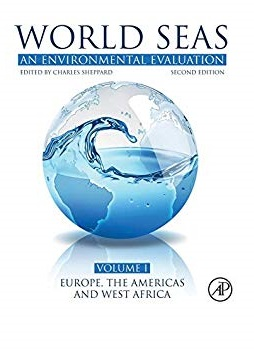
Chapitre du l'ouvrage : World Seas :an Environmental Evaluation The Bay of Biscay is located in the temperate North-east Atlantic Ocean. Winds tend to have an eastward component, driving a strong wave regime and currents. The river discharge is near 1500 m3 s? 1. Plankton communities are relatively well known, excepting its productivity. Maps of benthic communities’ distribution exist, but there is little knowledge on canyon, abyssal, and bathyal communities. Habitats have been mapped on the Bay, but at levels 2–4 in EUNIS. There are nearly 700 fish species, of which around 20 are commercial. The 42 species of marine mammals identified in the region represent 35% of the total in the world. The disturbances produced by human activities are inputs of pollutants, physical disturbances, and impacts on biological communities and species. The impacts come from human settlements, extractive activities, industrial activities, building of infrastructures, as well as shipping and oil transport. The Bay is under the Oslo-Paris Convention and several locations have been protected, especially in coastal areas, but very few offshore. Under the Marine Strategy Framework Directive, the environmental status has been assessed to be of good status, with some indicators needing improvement and better knowledge. The area will experience an important impact from global change, because of the retreat of cold water species, incoming of subtropical ones, and rise in sea level. Challenges for the future are related to biodiversity loss, invasive species, and global warming.
